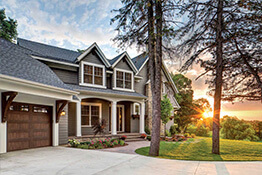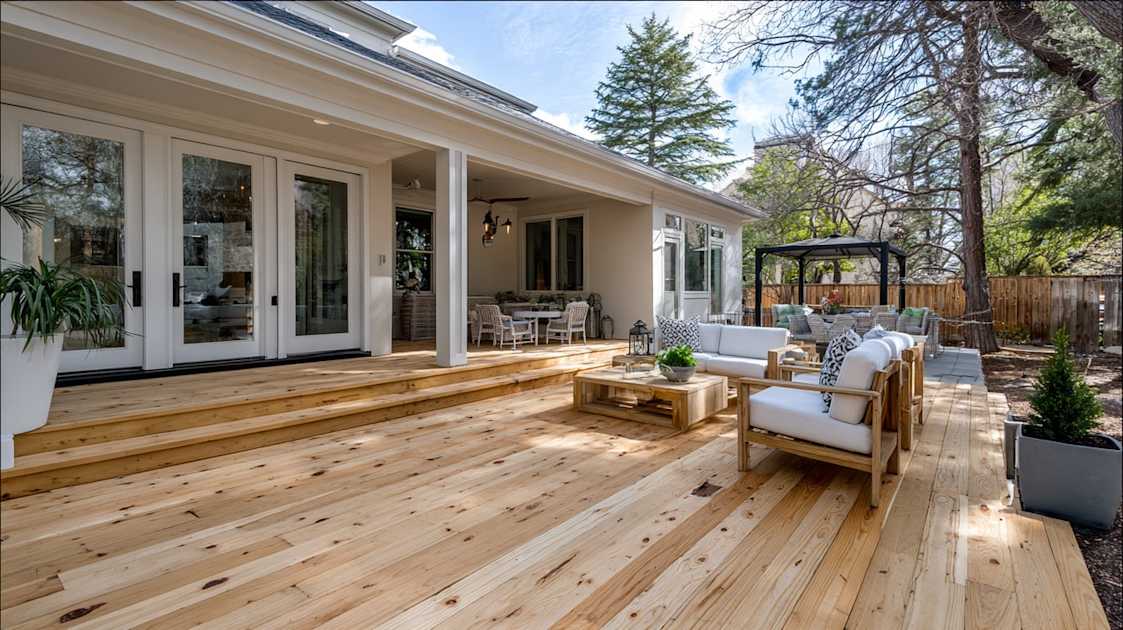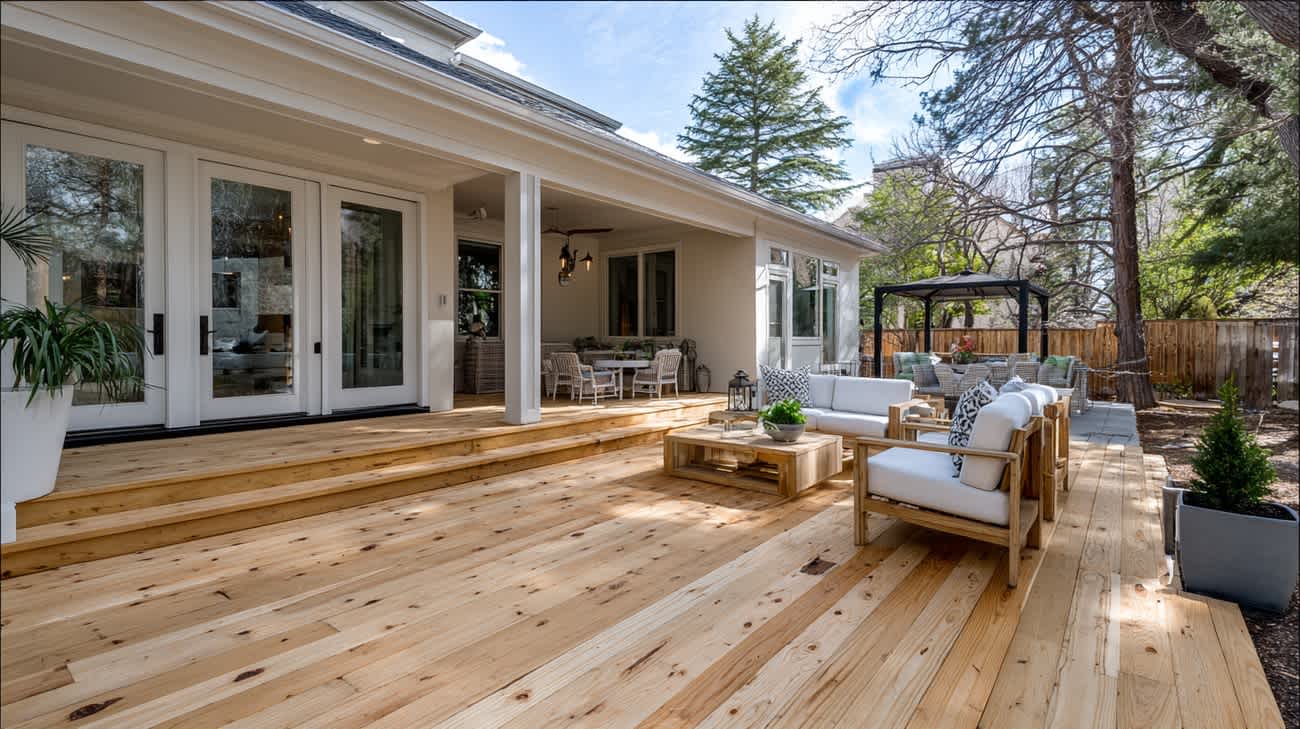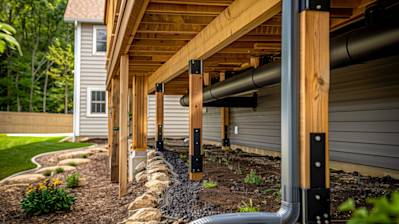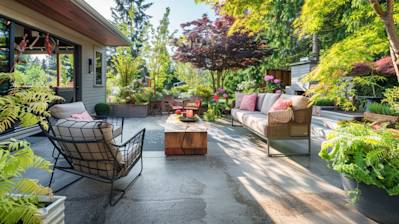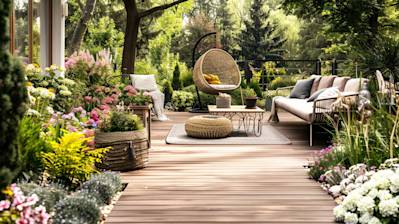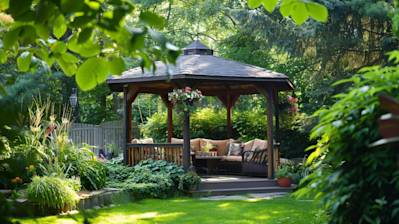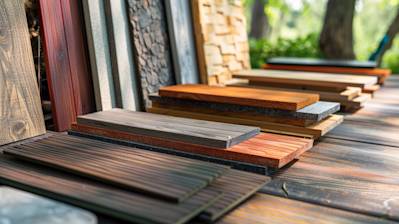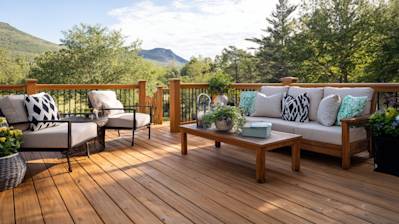Understanding Pressure Treated Lumber
Pressure treated lumber is one of the most popular materials for deck building, thanks to its resistance to decay and pest damage. This type of lumber undergoes a process that involves infusing chemicals into the wood to enhance its durability and longevity. While pressure treated wood is often a go-to for outdoor construction projects, understanding the nuances is crucial for getting the most out of your pressure treated lumber deck.
The Treatment Process
The process involves placing the wood in a large cylinder where preservatives are infused into the wood under pressure. This ensures the chemicals penetrate deeply, providing excellent protection against termites, fungi, and other wood-destroying organisms. The chemicals used can vary, but they often include copper-based compounds and other preservatives that are effective at preventing rot.
Types of Preservatives Used
There are several types of preservatives used in pressure treated lumber:
- Alkaline Copper Quaternary (ACQ): One of the most common, known for its strong preservative properties.
- Copper Azole (CA): Less corrosive, offering a more eco-friendly option.
- Micronized Copper Azole (MCA): A newer method with fine particles, providing the benefits without using harsh chemicals.
Each type has its pros and cons, so selecting the appropriate one for your climate and intended use is key.
Advantages of Building a Pressure Treated Lumber Deck
Long-Lasting Durability
A primary benefit of pressure treated lumber is its enhanced durability. Designed to withstand the elements, decks made from this material can last for decades with proper maintenance. The pressure treatment significantly reduces the risk of decay, ensuring your investment stands the test of time.
Budget-Friendly Option
When compared to other decking materials like cedar or composite, pressure treated wood is relatively affordable. This cost-effectiveness makes it a popular choice for homeowners looking to balance quality and budget constraints, making it an ideal option for those starting major outdoor projects.
Versatility and Workability
Pressure treated decks are incredibly versatile and can be easily customized. The wood can be stained, sealed, and painted to achieve the desired aesthetic. Its pliability allows for cutting and shaping to meet specific design needs, making it a suitable choice for DIY enthusiasts and professional builders alike.
Considerations and Drawbacks of Pressure Treated Wood
Chemical Exposure
One of the main concerns with pressure treated lumber is the chemical exposure. While the treatments make the wood resistant to pests and decay, they can also raise health and environmental concerns. It's essential to use appropriate safety measures, such as wearing gloves and a mask, especially when cutting the wood or during construction.
Maintenance Requirements
Regular maintenance is crucial for preserving the appearance and function of a pressure treated lumber deck. This includes periodic cleaning, sealing, and inspecting for any signs of damage. Without proper care, the wood can still experience warping or weathering over time.
Environmental Impact
Although pressure treated wood is more environmentally friendly than in previous decades, there's still an ongoing debate about its long-term environmental impact. Selecting products with eco-friendly preservatives can mitigate some of these concerns.
Steps to Building Your Pressure Treated Lumber Deck
Planning and Design
The first step is to plan your deck design. Factors to consider include:
- Purpose: Determine how you will use the deck—entertaining, relaxation, or dining?
- Size and Shape: Consider the size of your yard and any existing structures.
- Building Codes: Check local regulations and obtain necessary permits.
Material Selection
Choose the appropriate type of pressure treated wood based on:
- Climate: Moist environments might require more robust treatments.
- Aesthetic Preferences: Decide on a finish or stain that complements your home.
Construction Basics
- Foundation: Properly prepare the site with a solid foundation, utilizing concrete footings if necessary.
- Framework: Construct the support beams and joists, ensuring everything is level and secure.
- Decking Installation: Lay the decking boards with suitable spacing to allow for expansion and contraction of the wood.
Finishing Touches
To enhance the longevity and appearance of your pressure treated lumber deck:
- Sealing and Staining: Apply a high-quality sealant and stain to protect against moisture and UV rays.
- Railings and Features: Consider adding railings or built-in seating for safety and comfort.
Maintenance Tips for a Pressure Treated Deck
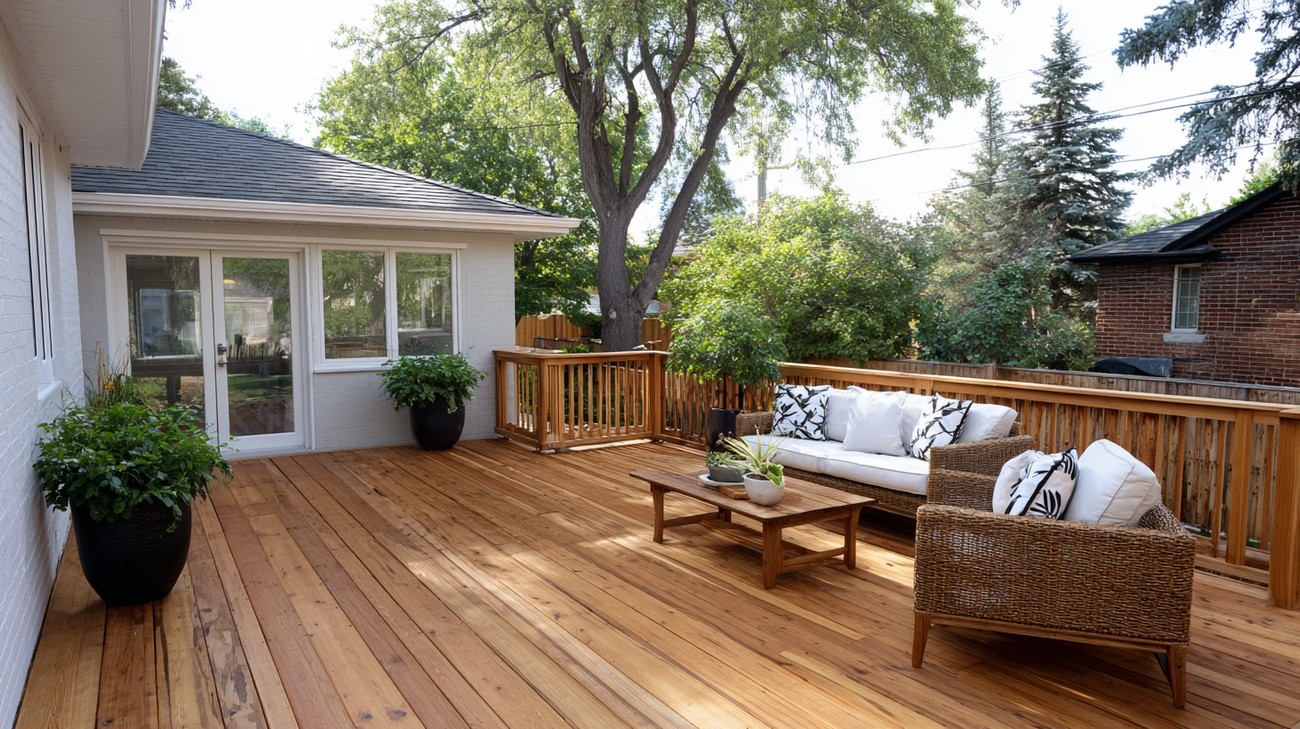
Frequently Asked Questions about Pressure Treated Lumber Deck
Why should I choose pressure treated wood for my deck?
Choosing pressure treated wood for your deck is a smart decision if you're looking for durability and longevity without breaking the bank. This type of wood can withstand the elements, resist insect infestations, and fend off rot, making it ideal for outdoor structures. Plus, it's widely available and more affordable than many alternative decking materials.
How long does a pressure treated lumber deck last?
A deck made from pressure treated lumber can last up to 15 to 20 years or more with proper maintenance. The lifespan of your deck will largely depend on factors such as climate, the quality of the wood, and how well it's maintained. Regular sealing, cleaning, and inspections for any damage will help extend the life of your deck.
How should I maintain a pressure treated wood deck?
Maintaining a pressure treated wood deck involves regular cleaning to remove dirt and debris, applying a water-repellent sealer every couple of years, and checking for any signs of damage like cracks or rot. If you notice any nails or screws sticking up, ensure they're hammered back down securely. This routine care will help keep your deck looking its best.
Can pressure treated decks be painted or stained?
Absolutely! Painting or staining your pressure treated wood deck is an excellent way to enhance its aesthetics and add extra protection. However, it's important to let the wood dry completely before applying paint or stain, as the treatment process leaves wood wet. This often requires waiting several months after installation. Be sure to choose a paint or stain compatible with treated lumber.
Is pressure treated lumber safe for kids and pets?
Yes, pressure treated lumber is generally safe for both kids and pets. Modern pressure treated wood is treated with chemicals that are considered safe for everyday use in residential settings. However, it's still critical to wash hands after contact with the wood and ensure any cuts or sawdust from the lumber are cleaned up promptly to minimize exposure.
Can I use pressure treated wood for both the deck and railing?
Definitely! Pressure treated wood is widely used for both decking and railings. It's sturdy enough to provide a solid walking surface and reliable support for railings. Using the same type of wood for both parts of your deck can also result in a uniform appearance, creating a seamless and cohesive outdoor space.
How much does a pressure treated deck cost?
The cost of a pressure treated deck can vary based on the size of the deck, the complexity of your design, and your location. However, generally speaking, pressure treated lumber is one of the more affordable options for decking materials. On average, you might expect to spend between $15 to $25 per square foot, including installation.
Are there alternatives to pressure treated lumber for decks?
Yes, there are several alternatives to pressure treated lumber when it comes to decking materials. These include composite decking, cedar, redwood, and exotic hardwoods. Each of these options offers unique benefits, such as increased aesthetic appeal or ease of maintenance, but often at a higher upfront cost than pressure treated wood.
Can pressure treated wood decks be used in all climates?
Pressure treated wood decks can be used in a variety of climates due to their resistance to moisture and pests. However, in areas with extreme weather conditions, additional maintenance may be necessary to protect the wood from cracking or warping. It's a good idea to consult with a local expert who understands the specific demands your climate places on outdoor structures.
Does pressure treated lumber affect the environment?
Pressure treated lumber does have some environmental impacts due to the chemicals used in the treatment process. However, many of the chemicals used today are much safer and more environmentally friendly than those used in the past. It's important to dispose of any treated lumber scraps and sawdust properly, as they should not be burned or added to compost. Opting for certified wood products can also help ensure environmentally responsible sourcing.
Can I DIY install a pressure treated lumber deck?
Yes, DIY installing a pressure treated lumber deck is certainly possible if you have the right tools and skills. It's essential to start with a solid plan, understand local building codes, and follow recommended construction practices. If you're new to decking or construction, you might consider consulting with a professional to ensure your deck meets safety standards.

## Pros & Cons of Pressure Treated Lumber Deck
### Pros
#### Affordability
One significant advantage of using pressure-treated lumber for your deck is its cost-effectiveness. Compared to other decking materials, such as composite decking or exotic hardwoods, pressure-treated wood is generally less expensive. This makes it an attractive option for homeowners working within a budget. You can enjoy the look and feel of a natural wood deck without breaking the bank.
#### Availability
Pressure-treated lumber is widely available across various regions, making it easy to find at most home improvement stores. This accessibility means that you won't have to search far and wide for the materials you need. Plus, it often comes in several standard sizes, which simplifies the planning and construction process.
#### Durability
Thanks to the chemical treatment process it undergoes, pressure-treated lumber is resistant to common problems that plague other types of wood, such as rot and insect infestation. The treatment makes the wood more robust and able to withstand harsh weather conditions, making it an ideal material for outdoor decking.
#### Versatility
This type of lumber can be used in a variety of construction projects. Whether you want to build a simple deck or add intricate railings or other features, pressure-treated wood offers versatility. It's easy to cut, shape, and assemble, allowing for creativity in design.
#### Repair and Maintenance
In the event that parts of the deck get damaged, pressure-treated wood is relatively easy to repair. Individual boards can be replaced without too much hassle, and since this material is so common, finding replacement parts is generally straightforward.
#### Long Lifespan
Pressure-treated lumber can last for decades if properly maintained. Regular sealing and staining can enhance its longevity even further, helping it retain its appearance and strength over time.
### Cons
#### Chemical Concerns
One downside to pressure-treated lumber is the chemicals used in its treatment process, which can be a concern for some homeowners. The wood is treated with chemical preservatives to make it resistant to rot and insects, but these chemicals can also pose environmental and health risks. While modern treatments are considered safer than older methods, it's still something to consider, especially if you have children or pets.
#### Splinters and Surface Quality
Pressure-treated wood can be prone to splinters, which could be a significant concern if you or your family enjoy walking barefoot on the deck. Additionally, the material may not be as smooth or refined in appearance as other decking options, potentially detracting from the overall aesthetic of your outdoor space.
#### Maintenance Requirements
While not as demanding as untreated wood, pressure-treated lumber does require regular maintenance to keep it in good shape. This includes cleaning, sealing, and staining every couple of years to protect it from UV rays and moisture. Failure to maintain the deck can result in fading, splitting, and warping over time.
#### Environmental Impact
The use of chemicals in pressure-treated lumber can have environmental implications. When disposed of, the chemicals may leach into soil or water sources. Furthermore, some people might find the sustainability aspect concerning if the wood is sourced from non-sustainable forests.
#### Weight and Handling Issues
Pressure-treated lumber can be heavier than untreated wood because of the added chemicals and moisture it often contains post-treatment. This can make handling and installation more labor-intensive and may require additional support structures for certain projects.
#### Aesthetic Limitations
Although pressure-treated wood can be painted or stained, it may not match the natural beauty and color variations of other woods or materials. If you're aiming for a high-end look, this might necessitate additional work in terms of finishing and detailing to achieve the desired appearance.
#### Potential Warping or Cracking
In some cases, pressure-treated wood can warp or crack, particularly when exposed to direct sunlight or variations in humidity. This makes it essential to choose high-quality lumber and implement proper installation techniques to mitigate these issues.

Myths / Misconceptions About Pressure Treated Lumber Decks
Pressure treated lumber is a popular choice for decking projects due to its enhanced durability and resistance to environmental factors. However, several myths and misconceptions persist, leading to confusion and misguided decisions. Let's explore these to set the record straight.
Pressure Treated Lumber is Waterproof
Misunderstanding Water Resistance
One of the most common myths is that pressure treated lumber is fully waterproof. This assumption likely stems from its ability to resist decay and insects. However, while pressure treatment helps protect against these elements, it does not make the wood impervious to water. At its core, pressure treated lumber retains its wood characteristics and, like any wood, can absorb moisture if exposed continuously.
Effects of Water Exposure
When water continuously contacts the deck surface, it can lead to swelling, warping, and ultimately, rot over time if maintenance steps are not taken. This is why regular sealing and maintenance of your pressure treated deck is crucial for longevity, despite its treatment.
It’s Treated with Harsh and Toxic Chemicals
Evolution in Lumber Treatment Practices
There was a time when certain pressure-treated woods contained chromated copper arsenate (CCA), leading to legitimate health concerns. However, regulations have since evolved. Today, the types of chemicals used in pressure treating lumber are much safer for residential use. Modern products often use alkaline copper quaternary (ACQ) or copper azole, both of which significantly reduce toxicity concerns for humans and the environment.
Understanding the Safety
When handled and maintained correctly, contemporary pressure treated lumber is safe for use in family environments, including where pets and children play. It’s always wise to follow basic safety guidelines, such as wearing gloves during installation and washing hands afterward, which is typical with any DIY project.
Doesn’t Require Maintenance
The Misconception of Maintenance-Free
It’s easy to assume that the treatment process means you can “set it and forget it.” In reality, while pressure treated lumber is robust and resilient, it’s not maintenance-free. This misconception can lead homeowners to neglect their decks, accelerating wear and reducing their lifespan.
Types of Maintenance Required
Regular cleaning, sealing, and occasional resealing are necessary to maintain your deck's beauty and durability. Sweeping off debris, washing the surface to remove grime, and applying a water-repellent sealant will keep the deck in top shape. These steps help protect against the elements and continue to deter insects and decay.
All Pressure Treated Lumber is the Same
Variety in Treatment Level
Another misconception is that pressure treated lumber is a one-size-fits-all product. In reality, there are different levels and types of treatment depending on the wood’s intended use. For example, wood for ground contact will have a higher level of treatment compared to wood used for above-ground structures due to the increased risk of moisture exposure.
Types and Grades
There are also varying wood grades and species. Some pressure-treated wood might be southern yellow pine, which is common due to its receptiveness to the treatment process, while others might use different species. The aesthetic and physical properties can vary, so it’s essential to choose the right type of pressure treated lumber for your specific decking needs.
Instantly Safe to Use for Building
Curing and Settling
Upon purchasing and installing pressure treated lumber, some believe it is immediately ready for use. However, it often requires some curing time after installation before sealer or paint can be applied. This settling period allows any excess treatment chemicals to dry or gas off, ensuring the best possible adhesion during further treatments like sealing or staining.
Safety in Initial Stages
During this curing time, it's advisable to handle the lumber with care and to wash your hands after any contact. This helps avoid any potential irritation from the treatment chemicals before they have fully set.
Insect-Proof Forever
Effective, Yet Not Omnipotent
While pressure treated lumber is highly resistant to insects like termites and ants, believing it’s entirely impervious to insect damage is misleading. These treatments significantly deter infestations but do not make the wood insect-proof.
Continued Vigilance
Continuous monitoring for signs of insect activity is still important. Keeping the area around the deck free of debris and standing water can further minimize the attraction of these pests. Additionally, regular inspections can help spot and address any issues before they become significant problems.
Keeping these myths in check ensures a well-built, durable, and aesthetically pleasing pressure treated lumber deck, maximizing enjoyment and functionality for years to come.
Summary
Sure, here are three concluding paragraphs about a pressure treated lumber deck in a conversational style:
When it comes down to it, a pressure treated lumber deck can really offer some great benefits for your outdoor space. It’s tough and can handle all types of weather, so you don’t have to worry about it wearing out too quickly. Plus, it’s budget-friendly, which makes it a popular choice for many homeowners looking to add a deck without breaking the bank.
Another thing you might love about having a pressure treated lumber deck is its versatility. You can easily stain or paint it to match your house or show off your style. And if you decide on a change later, just refresh it with a new coat of stain or paint. It’s like having a whole new deck without going through all the hard work of building one from scratch again.
While a pressure treated lumber deck is a great option, just remember it does require some maintenance like cleaning and sealing every so often to keep it in top shape. So long as you keep up with the maintenance, you'll find it’s a sturdy, reliable choice that can beautifully enhance your outdoor living space.
About US Quality Construction of Columbus
About Us
Welcome to US Quality Construction of Columbus! Nestled in the heart of Ohio, we're your go-to team for all things construction, specializing in residential and light commercial projects. Our passion for quality craftsmanship and attention to detail is what sets us apart. Whether you're dreaming of a new deck, envisioning that perfect kitchen remodel, or planning an expansion that maximizes space, we’ve got you covered. Our crew brings years of experience and a shared commitment to delivering exceptional results on time and within budget. At US Quality Construction, we're not just building structures; we're building lasting relationships with our clients. Trust us to bring your vision to life!
Tags: pressure treated lumber, deck building, outdoor construction, wood decking, treated wood, decking materials, diy deck,
